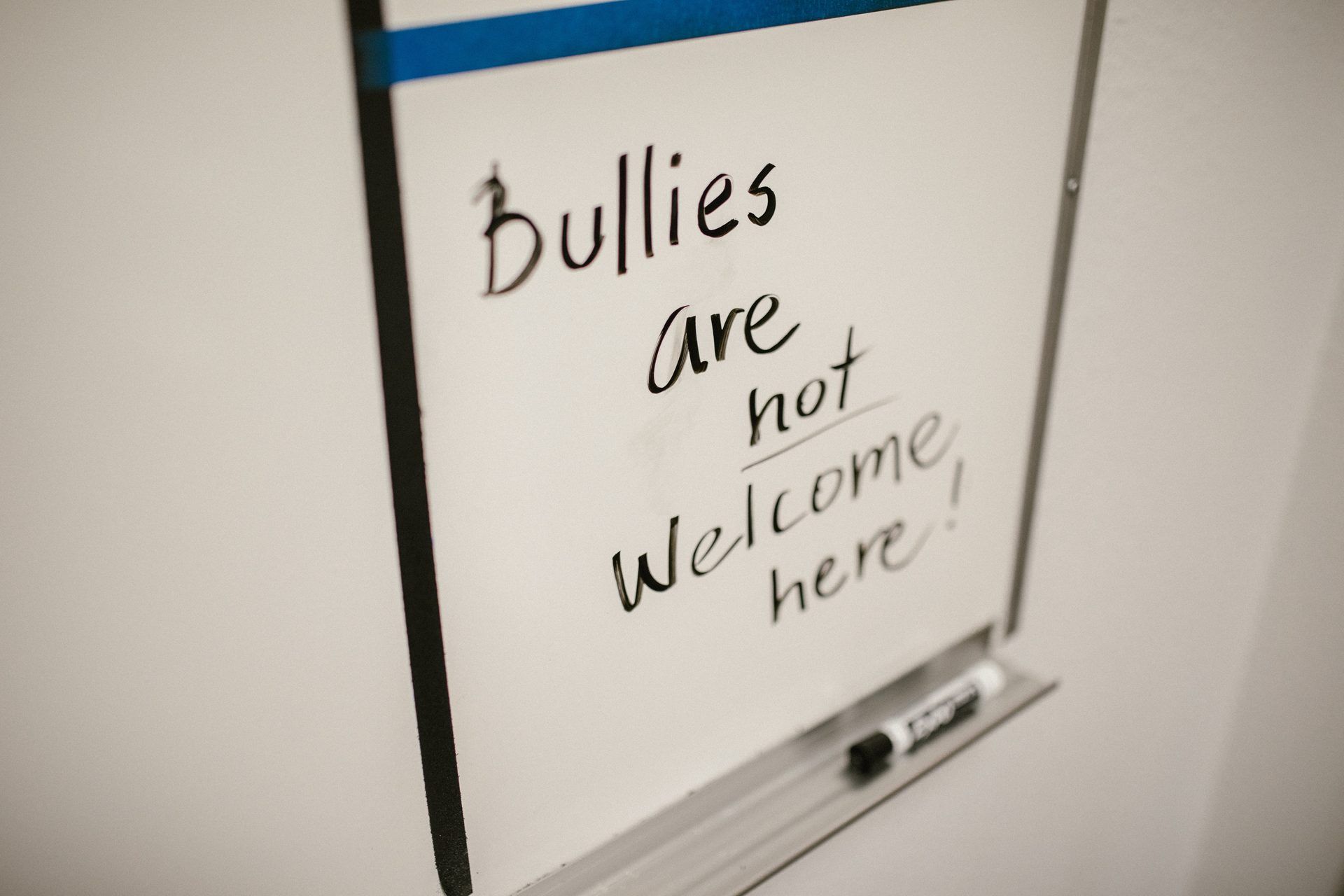Do you ever wonder what the meaning of cyberbullying is? Cyberbullying is one of the biggest problems in today’s digital world. Cyberbullying occurs when someone is threatened, harassed, or intimidated through a smartphone, instant messaging app, email, chat room, or social networking sites like Facebook or Twitter. Continue reading to discover intriguing cyberbullying facts and learn how to avoid cyberbullying.
What is the meaning of cyberbullying?
Cyberbullying is the intentional, persistent, and hostile use of information technology to harass or damage other individuals. In parallel, a cyberbully is someone who uses the internet to threaten or scare another person, especially by sending them unwanted messages.
According to U.S. Legal Definitions, cyberbullying can range from merely spreading rumors or slander about a person online that incites hatred in the hearts of others to releasing materials that specifically identify victims and severely defame and humiliate them. Cyberbullying has become more prevalent due to the increased usage of digital technologies, particularly among teens.
Online bullying also refers to cyberbullying and cyber harassment. As the digital environment has grown and technology has improved, it has become more prevalent, especially among youth.
Cyberbullying is the act of someone, usually a teenager, harassing or bullying someone else online, especially on social media sites. Posting rumors, threats, sexual remarks, a victim’s private information, or derogatory labels are all examples of harmful bullying conduct (i.e. hate speech).

Repeated actions and an intention to cause harm are indicators of bullying or harassment. Cyberbullying victims may have reduced self-esteem, more suicidal thoughts, and other distressing emotions, including fear, frustration, anger, or depression.
Internet trolling is a popular form of bullying that occurs in an online setting (such as social media or online gaming) to cause a disturbance or to entertain the perpetrator.
Another type of bullying or harassment is cyberstalking, which involves following a person through electronic contact and may be a real threat to them.
Check out what is cyberstalking
Although there are obviously significant differences, cyberbullying frequently resembles traditional bullying. Due to the online nature of the contact, victims of cyberbullying might not be aware of their bully’s identity or the reason behind their targeting. Because the content used to harass the victim can be quickly disseminated to a large audience and frequently remains available long after the first incident, the harassment can have far-reaching impacts on the victim.
Cyberbullying effects
Cyberbullying can occur anytime, day or night, and is typically carried out by anonymous sources, in contrast to traditional bullying, which is frequently restricted to schools and known bullies. As a result, it becomes more aggressive and frequently violent.

Since victims of real-world bullying have a harder time escaping their abusers than victims of cyberbullying, you might assume that face-to-face bullying is significantly worse than cyberbullying. However, victims of cyberbullying can simply turn off their computers or block bullies on social media.
Sadly, it’s not quite that easy. While the consequences of physical bullying should not be discounted, the consequences of cyberbullying can be considerably more severe.
Effects of cyberbullying include the following:
- Emotional effects
- Humiliation
- Isolation
- Anger
- Powerlessness
- Mental effects
- Depression and anxiety
- Low self-esteem
- Academic issues
- Suicidal thoughts and self-harm
- Behavioral effects
- Using drugs or alcohol
- Skipping school
- Carrying a weapon
- Physical effects
- Gastrointestinal issues
- Eating disorder
- Sleep disturbances
Having a counselor or therapist who teaches you how to deal with and respond to cyberbullying in healthy ways can be helpful for every person who has been a victim of it.
How to avoid cyberbullying?
According to UNICEF, consider your actions carefully before sharing anything on digital media because it might remain online forever and be used against you in the future.

Don’t reveal personal information like your address, phone number, or school name. Find out what privacy options are available on the most frequent apps.
8 tips for how to avoid cyberbullying:
- By changing your account privacy settings, you can choose who may view your profile, send you direct messages, and leave comments on your posts.
- You have the option to report offensive remarks, messages, images, and videos and ask that they be taken down.
- In addition to “unfriending,” you can entirely block users to prevent them from accessing your profile or getting in touch with you.
- You can choose to restrict who can view certain people’s comments without completely blocking them.
- You can remove or hide postings from certain users from your profile.
- Do not share something extremely private.
- Do not reply to online bullies.
- Report cyberbullies.
Cyberbullying examples
Cyberbullying may take the following forms:
- Offensive messages or IMs,
- Telephone pranks,
- Hacking a person’s gaming or social networking profile
- Using foul language in an online game
- Spreading rumors or secrets
- Identity theft
Bullying can take many different forms online, and each one differs in appearance.
Harassment
The goal of harassment is to make the target of cyberbullying feel terrified, embarrassed, or ashamed of themselves. It can be remarks, text messages, or threatening emails.

Other types of harassment consist of:
- Utilizing group conversations to gang up on someone
- A person’s color, gender, sexual orientation, economic situation, or other attributes are used to justify disparaging remarks.
- Using social media platforms like Twitter, Facebook, or Instagram publicly humiliates cyberbullying by posting offensive or false information there.
Impersonation
To humiliate, shame, or harm someone publicly, someone may attempt to pose as the target of their cyberbullying.
Here are a few instances:
- Gaining access to someone’s internet profile and altering any information on it, such as a photo or the “About Me” section, to something damaging or unsuitable
- To deceive someone into a relationship as a joke or for their own personal advantage, someone engages in catfishing, creating a false persona.
- Creating a phony account using their target’s screen name to write offensive or unpleasant comments on other people’s sites.
Other examples
There are various types of cyberbullying, and the perpetrators employ various strategies to make their victims feel as horrible as they can.

Some strategies are:
- Taking pictures of someone indecently or naked without getting their permission and posting them.
- Sharing or publishing nude photos with a large audience to humiliate the target of cyberbullying.
- Sharing a person’s private information on a public website could make them feel insecure.
- Bullying someone physically and having it recorded by another person so it may be viewed and spread later.
- Spreading rumors about someone.
Cyberbullying facts
Statistics indicate that teens are more likely than adults to experience cyberbullying. Let’s examine the figures now:
- According to Pew Research Center research, 33% of adults have encountered cyberbullying, compared to 59% of youth who use the internet.
- More than 37% of kids have been victims of cyberbullying. About 30% have been the target of multiple attacks, according to Cyberbullying.
- Online bullying affects about 50% of LGBTQ+.
- According to Childrenssociety, 83% of young people think social media companies should take greater action against cyberbullying on their websites.
- According to NCPC, only one in ten teenagers who have been abused will report to a parent or other trusted adult.
- According to Techjury, nearly 34% of all US children have experienced cyberbullying at least once, and 68% of children who have experienced online harassment struggle with mental health difficulties.
- Suicide rates among those who have experienced cyberbullying are 1.9 times higher, according to Techjury.
- According to First Site Guide, in 2021, India had the most instances of cyberbullying.
- According to Cyberbullying Research Center, the majority of victims of bullying are multiracial females. High school girls with different skin tones make up 210 out of 1000 victims.
Cyberbullying law
Bullying and cyberbullying victims have a right to justice and expect those responsible for being held accountable.
Bullying laws, particularly those addressing cyberbullying, are still developing and not yet universal. Because of this, many nations rely on other pertinent laws, like those prohibiting harassment, to penalize cyber bullies.
Online behavior that intentionally causes substantial emotional distress is considered illegal in nations where cyberbullying is subject to special legal regulations. Some of these nations allow victims of cyberbullying to request protection, block communication with a specific person, and ban, either temporarily or permanently, the use of the person’s electronic devices for cyberbullying.

According to UNICEF, it’s crucial to remember that sanctions are not always the best method to alter bullies’ behavior. Focusing on undoing the damage and restoring the connection is frequently preferable.
Conclusion
Threats, provocative remarks, racial or ethnic slurs, gay bashing, attempting to infect the victim’s computer with a virus, and overcrowding an e-mail inbox are all examples of cyberbullying.
Limiting your internet connection time, refusing to respond to threatening or defamatory messages, and never reading emails from senders you do not know or from known sources of unwelcome communications can all help you deal with cyberbullying to some extent if you are a victim.
Many governments are considering cyberbullying laws since mobile and internet communications have increased quickly, and the offense is still relatively new. However, current rules against harassment and personal threats protect the violation.





